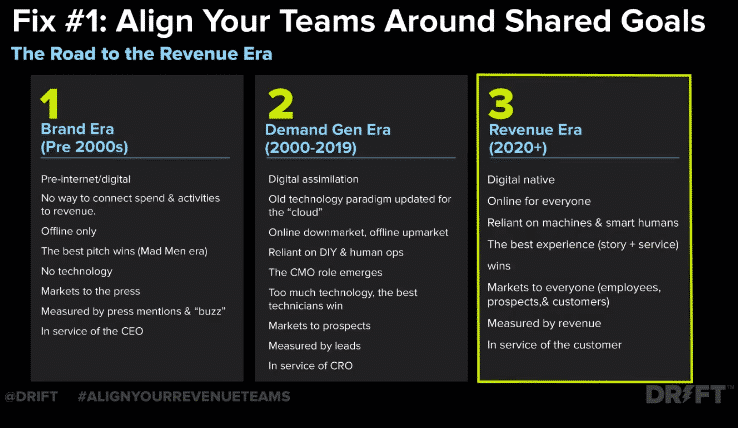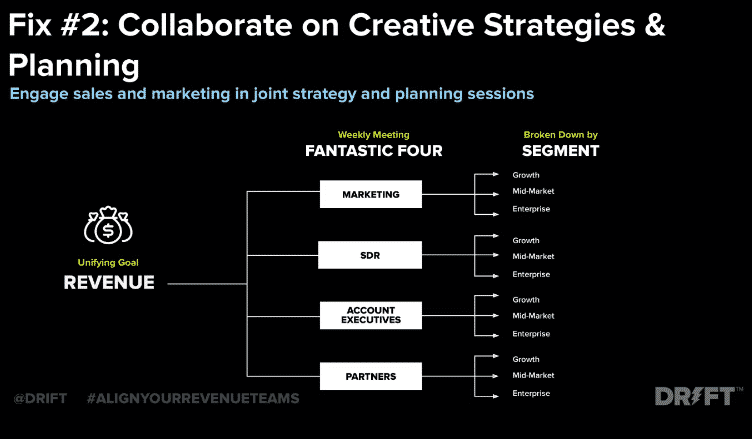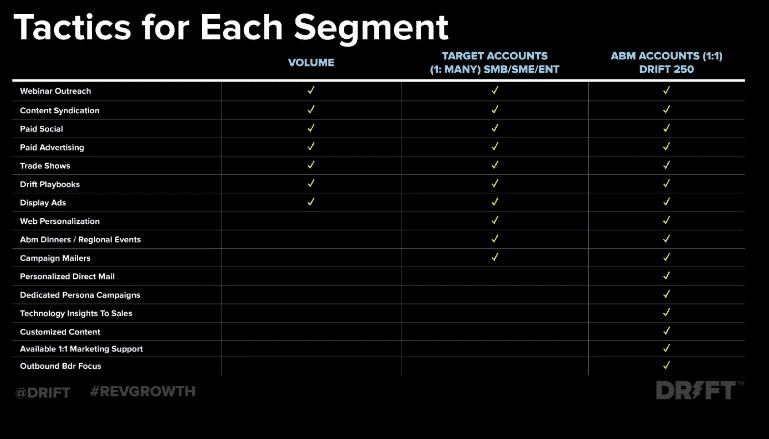Marketing and sales teams that aren’t in sync could mean wasted time and opportunities.
“Misalignment between marketing and sales teams is a trillion-dollar problem for B2B revenue teams,” said Julianne Thompson, director of sales development at revenue acceleration platform Drift, in a recent webinar. “There are a few key factors that led to this divide: sales reps not knowing how to service the appropriate content in sales deals, a lack of tracking for that content’s effectiveness, and wasted time on unproductive prospecting.”
She added, “While marketing and sales funnels are becoming more complex, it’s common that these two teams have trouble seeing eye to eye.”
Marketing teams have traditionally been accountable for leads and sales teams are commonly accountable for revenue. But, with such distinct divides in focus, this can often lead to discrepancies in planning and execution.
To help address this issue, Thompson and Meghan Flannery of Drift provided some tactics about how to align these two teams and, in turn, meet brand revenue goals.
Create shared goals
“We are now [living] in the ‘revenue era,’ where digital is no longer just a channel — it’s your entire brand experience,” said Thompson. “Marketing and sales now share the same goals. They’re both focused on driving revenue and improving the customer experience.”

Ongoing digital transformation moved brands from the low-tech brand era to the digital assimilation of the demand generation era. Brand success became more dependent on leads, which eventually led to a stark division between sales and marketing teams.
Now, accelerated transformation due to new technologies and changing customer expectations — spurred on by the 2020 pandemic — have brought these teams together once again.
“Buyers have come to expect real-time marketing and sales engagements,” Thompson said. “With this, the teams are aligned around the same goal, which is revenue.”
To effectively quantify these revenue targets, marketers and salespeople should align on specific KPIs. Here are some options Thompson and Flannery recommend:
- Scheduled or held conversations.
- Generated interest.
- Annual recurring revenue.
- Upsells and expansion.
Collaborate on strategy and planning
Once KPIs and revenue generation goals are set, sales and marketing teams can begin collaborating on deployment strategies. Flannery highlighted what her organization does to keep these teams aligned: “We have weekly meetings for the marketing team, SDR team, AE team, and partner team. These are the four teams that are mapped to the revenue goal, which are broken down by segments.”

Each of these vital teams reports on growth and compares its performance with the other groups. This constant communication and collaboration helps ensure processes are working together and address any potential discrepancies.
Aside from collaboration and planning, Flannery recommends marketers and salespeople break down tactics for each segment using target accounts and ABM accounts, or one-to-many targeting and one-to-one targeting. This division of responsibilities plays to each group’s strengths and can help increase customer engagement.

Implement tools that bridge the marketing and sales gaps
30% of all sales activities can be automated, according to data from McKinsey. Therefore, marketing and sales teams would be wise to take advantage of the alignment and engagement solutions they offer.
“What we’re trying to do is understand how we can automate certain parts of the process without taking anything away from the personalization,” said Thompson.
Her team uses sales engagement technologies to deploy persona-based automation that can perform tasks such as enrolling target audiences for events or sending personalized messages. These solutions can help marketing and sales teams improve outreach efforts.
On the marketing side, Flannery recommends marketers employ marketing technologies — such as ABM platforms, lead scoring software, or predictive modeling — to help pass better leads to their sales teams. These offer deeper, more actionable insights for sales teams.
Brands should also make sure each team adheres to designated outcomes to prevent arguments over tools, according to Flannery: “We spend a lot of time to make sure that we have the same end goal so there’s no fighting over what tech is used.”
As sales and marketing learn to trust each other in their respective processes, there will most likely be fewer conflicts. And this trust, when cultivated over time, can help build successful campaigns.
The post How to align B2B sales and marketing teams appeared first on MarTech.
(32)







